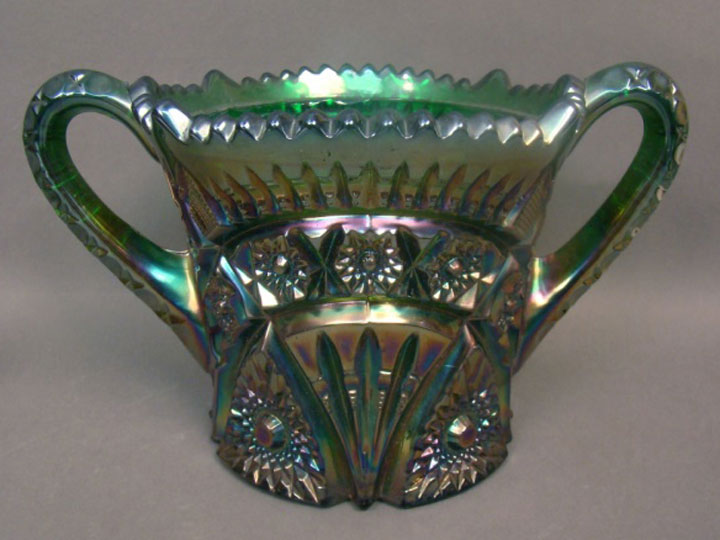
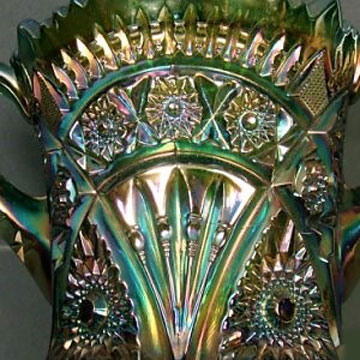
| Cambridge produced carnival glass using the molds from its "Nearcut" line. Nearcut was an attempt by Cambridge to duplicate the look of American brilliant cut crystal glass but to make it much more cheaply. Nearcut, like Nucut from Imperial or Prescut from McKee, obtained the design from a mold and not from glass blanks being cut by trained workers. In 1910, Cambridge issued a catalog for its Nearcut line. Many different patterns were included in the line. Patterns were distinguished with a No. and in some cases by a pattern names. Below are some of Cambridge's Nearcut line items made in carnival glass. Also see Buzz Saw and Double Star, Inverted Feather, Inverted Strawberry and Inverted Thistle. | |
| Forks - Cambridge | |
 |
 |
| Forks is the name given to this Cambridge cracker jar. Found in green or marigold with or without a crystal lid. The pattern is essentially the same as Wheat Sheaf but it does have a different mold number: No. 2696. | |
| Hobstar - Cambridge | |
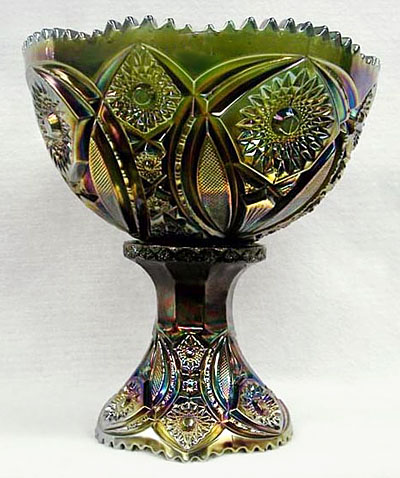 |
The pattern name and attribution of this green punch bowl and base were described at the 2009 auction where this punch bowl sold. This is the cup from the pattern. Courtesy of Carl and Eunice Booker. These pieces are very rare.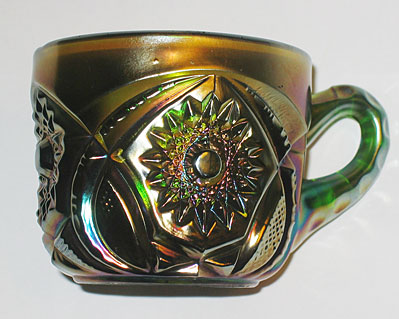 |
| Nearcut Decanter - Cambridge | |
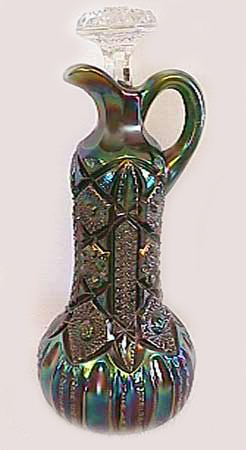 |
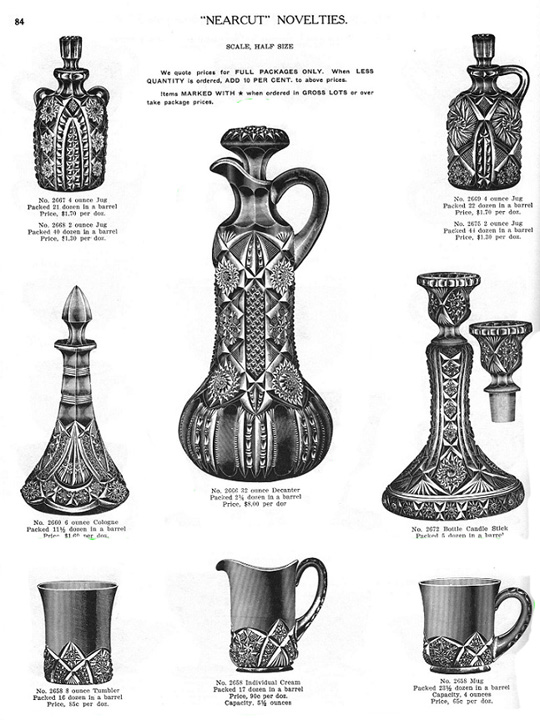 |
| The Cambridge catalog page that shows this decanter does not reveal a pattern name. While Nearcut refers to a broad line of glass and not a pattern itself, carnival glass collectors have still come to know this piece as simply the Nearcut Decanter. The decanter is No. 2666 and stands 12 inches tall. Known only in green, they sell very rarely. | |
| Nearcut Souvenirs - Cambridge | |
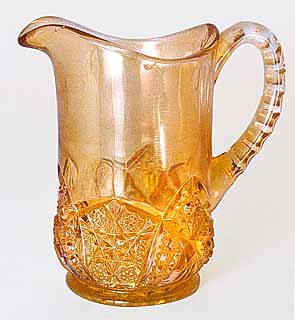 |
Found in creamers as shown at the left and tumblers and mugs of a similar design. Usually marigold with souvenir lettering. The Pattern is No. 2658 in the Cambridge catalog. |
| Snowflake - Cambridge | |
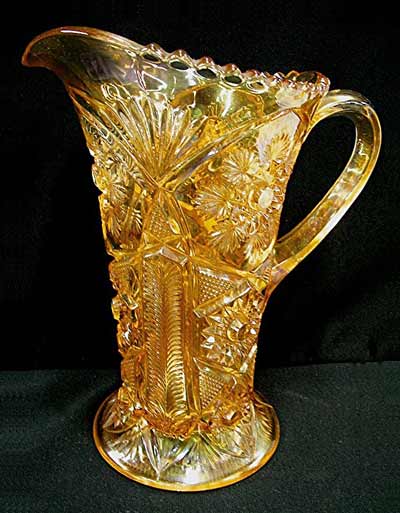 |
 |
 |
What little is known about this pattern is from what John Nielsen reported in the February 2009 HOACGA newsletter. He points out that the pattern was found in a book about Cambridge Glass listing 35 shapes in crystal. It was identified as being in the Nearcut line with the pattern No. 2635 Fernland. In a 1940 book, Minnie Kamm named the pattern "Snowflake" for the design near the top and that name seems to have stuck.
Only the pitcher shape appears to have been iridized. Only a few are known and they are all in marigold. The pitcher is 10 inches tall to the top of the spout. Old Cambridge catalogs show the pattern as No. 2635 and in several shapes. It is the toy table set, shown to the left, that has the pattern name Fernland shown. |
| Sweetheart - Cambridge | |
 |
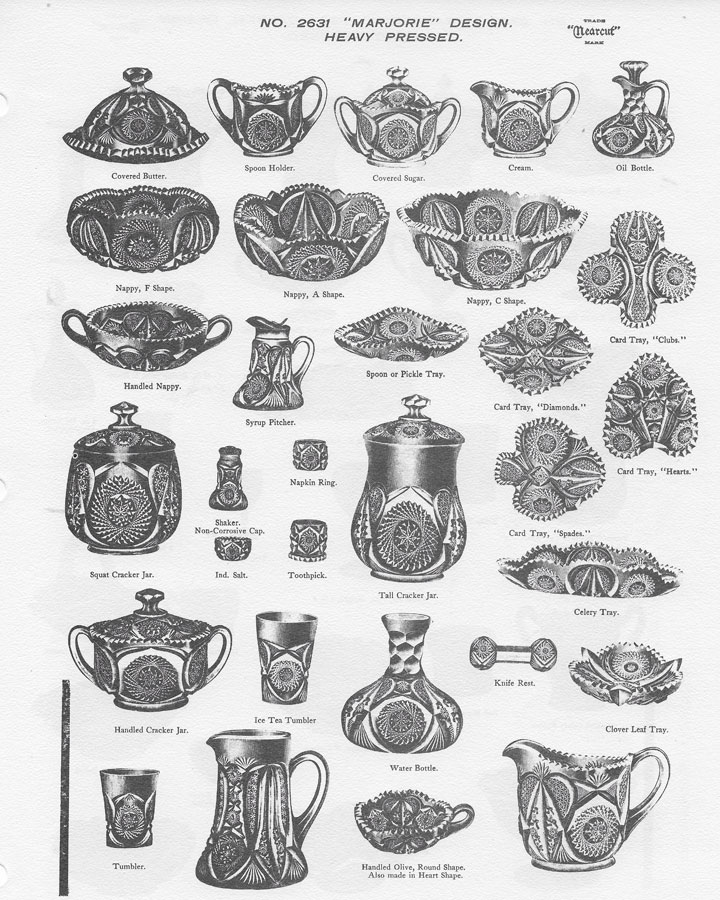 |
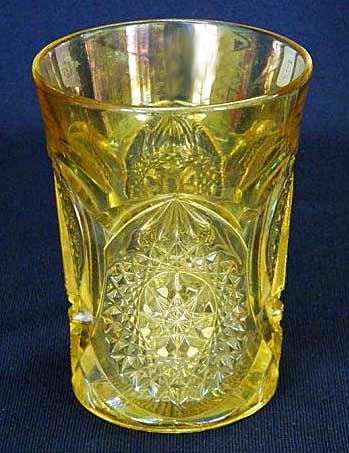 |
 |
| In carnival glass, Sweetheart is a very scarce pattern known only in this cracker jar in green and marigold and a handful of marigold tumblers. The pattern is found in old Cambridge catalogs listed as No. 2361 "Marjorie". Carnival glass collectors do not use the name Marjorie but call these pieces Sweatheart for the heart shaped designs between the large hobstars. | |
| Venetian - Cambridge | |
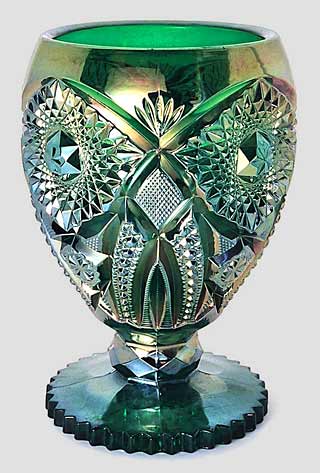 |
 |
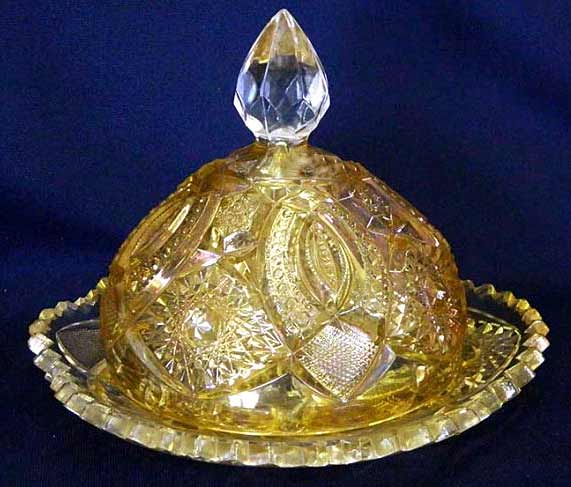 |
Not many of these spectacular 9-inch stemmed rosebowls are around. Usually referred to as a rosebowl because they're cupped in, but they could also be considered a vase. Shown in an old Cambridge catalog as the base of an oil lamp. It is listed as No. 2340.
To the left is the only other shape in the pattern. It's a butter dish with polishing on the base. Photo courtesy of Seeck Auctions. The rosebowls are found in green and marigold. The only butterdish is in marigold. |
| Wheat Sheaf - Cambridge | ||
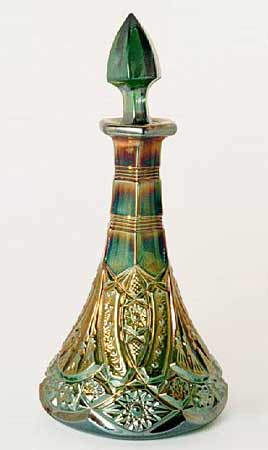 |
 |
 |
| Although commonly referred to as the Cambridge cologne or barber bottle, this piece, above left, is part of Cambridge's No. 2660 Wheat Sheaf pattern. It stands 8 1/2 inches tall and is found mostly in green and occasionally in marigold. It is shown in the ad which also includes the Nearcut Decanter. Wheat Sheaf is a pattern of arched vertical hobstar columns. Between or inside these arched columns are sprays of design which resemble wheat sheafs. Depending on the shape of the item, the sheafs can be sprayed upwards or down.
The whiskey decanter above center is quite rare and is shown in the ad to the right. It is described as "No. 131 32 oz Decanter Handled". The water pitcher in the ad to the right shows the wheat sheafs best and they are sprayed upwards. The third photo above shows the area between the two arched vertical columns on the decanter and the wheat sheafs are sprayed both up and down. |
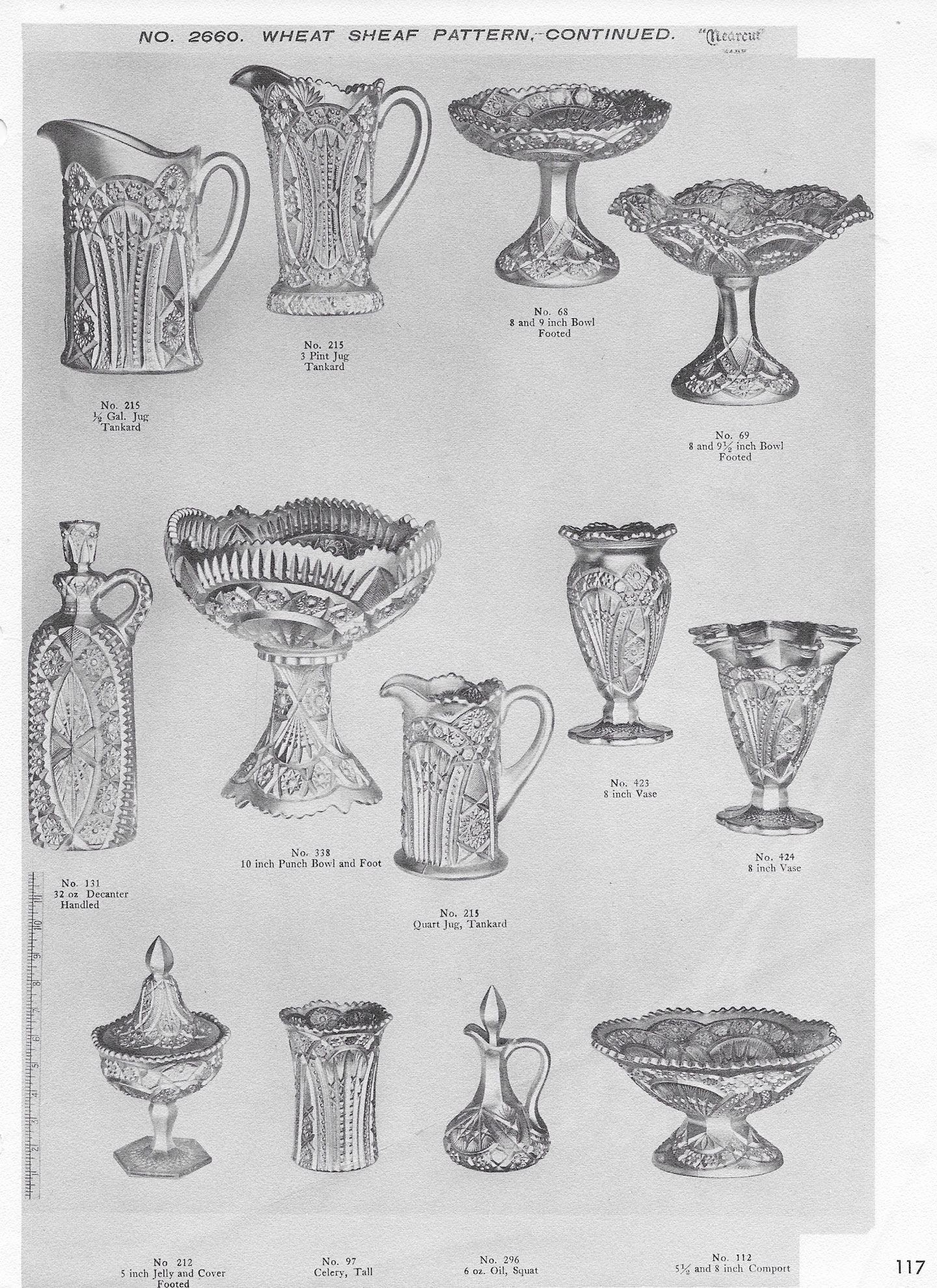 |